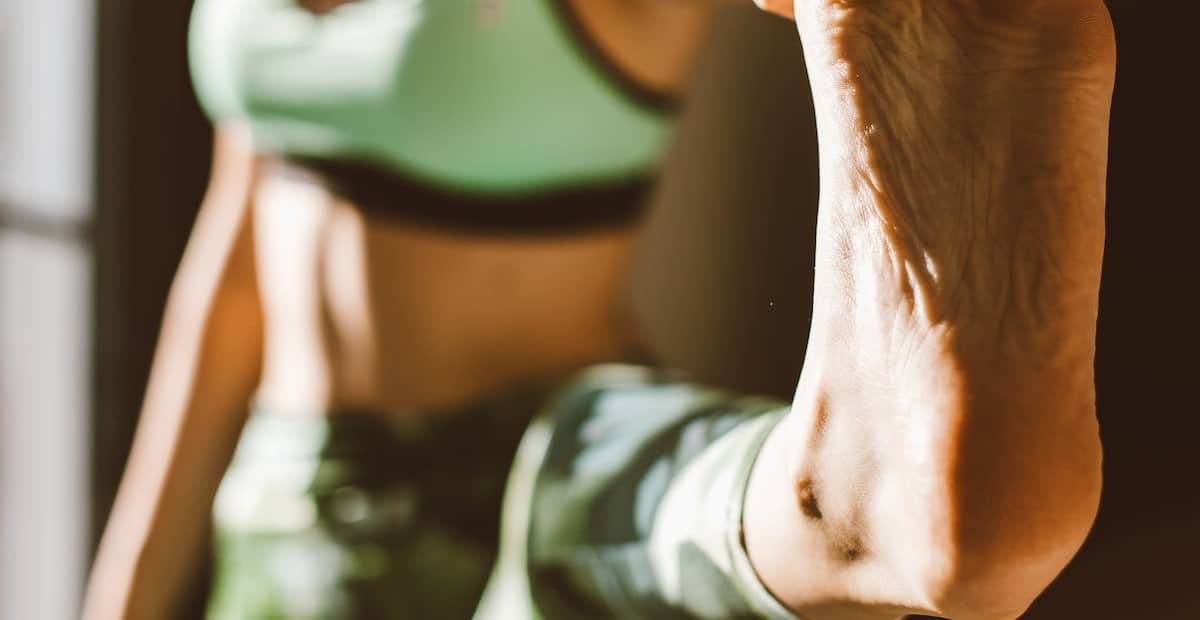
Contents
Plantar fasciitis pain can be life-changing, let’s learn how to heal that heel pain today
Plantar fasciitis doesn’t need to be some fancy medical term. For you and I, I’m hedging my bets and guessing you prefer the term heel pain. But, as I’m a professional, I need to give you a full (ish) medical breakdown of this ailment and how you can prevent it.
Plantar fasciitis is heel pain, but the ways in which you can stop it are far more plentiful than that definition. Foot pain is pretty game-breaking when it comes to fitness so just as the ways to prevent it are many, so are the ways to suffer from it.
Your heel bone is obviously important – running, core strengthening exercises, swimming… about 99% of stuff requires heel bone integrity. And when your fitness routines are trumped entirely by the small muscle that connects your heel to your toes, well, it may seem like an unfair defeat – let’s learn how to conquer your ‘soleful’ problems, today.
Pain relief
An obvious starting point is pain relief medication. When the plantar fascia is inflamed, then nonsteroidal anti-inflammatory drugs (NSAIDs) may help your foot feel better. It’s important to do proper research on the downsides of these medication types, but all in all, they’ve a proven record of helping.
Shoe inserts
Another way to help without having to treat per se is using a shoe insert. Plantar fascia pain can feel like night splints, and often it’s all because your foot is improperly positioned throughout the day (especially during intense training). So, getting a shoe insert can help to take pressure away from the problem area.
Using Ice
Inflammation requires an opposite cooling effect, to some degree. Tight calf muscles, strained ankles or inflamed glands can all be treated in this way. But while ice may be a little impractical at times, it’s also a great problem solver when it comes to plantar fasciitis problems. Jump Start writes, ”To make an ice pack, wrap a towel around a plastic bag filled with crushed ice or around a package of frozen corn or peas. Put it on your heel 3 to 4 times a day for 15 to 20 minutes at a time.”
Change activities
If the bottom of your foot is hurting, then it may be a sign that you need to stop using it, at least for now. Flat feet can obviously be an issue here but if, for any reason, your exercise routine is causing problems, then change it. High-impact activities are usually the killer routines, and chronic plantar fasciitis needs sensitive care. You can also find another way to burn calories, get your fix and stay fit – don’t overdo it.


Conclusion
Other ways include stretches, losing weight, adjusting diet, athletic tape and more. Do the right thing for your health and check out ways to help if those didn’t.
FAQs
Does the achilles tendon affect plantar fasciitis?
They can be linked if inflammation is a problem, and strain too.
Will wearing splints at night for plantar fascia help?
We’d certainly recommend that you try wearing splints at night that keep your plantar fascia stretched out, preventing it from tightening. While the splints may take some getting used to, the joy of hopping out of bed in the morning without being greeted by pain is worth the initial discomfort.